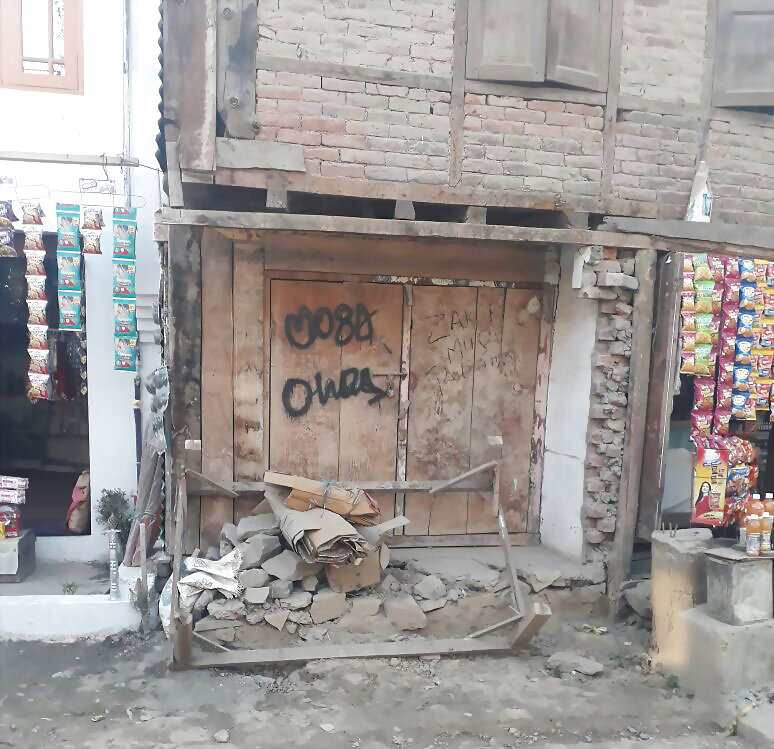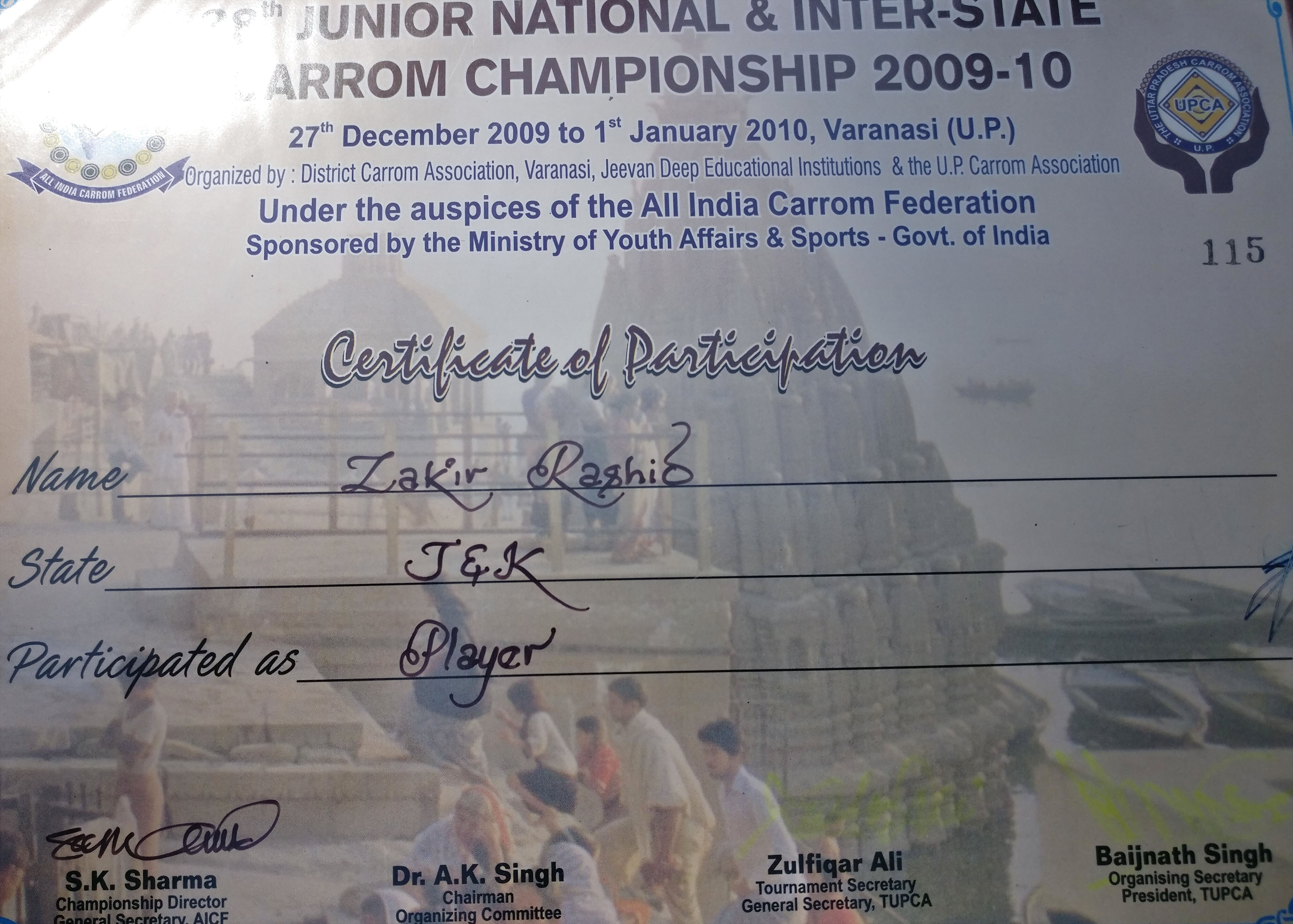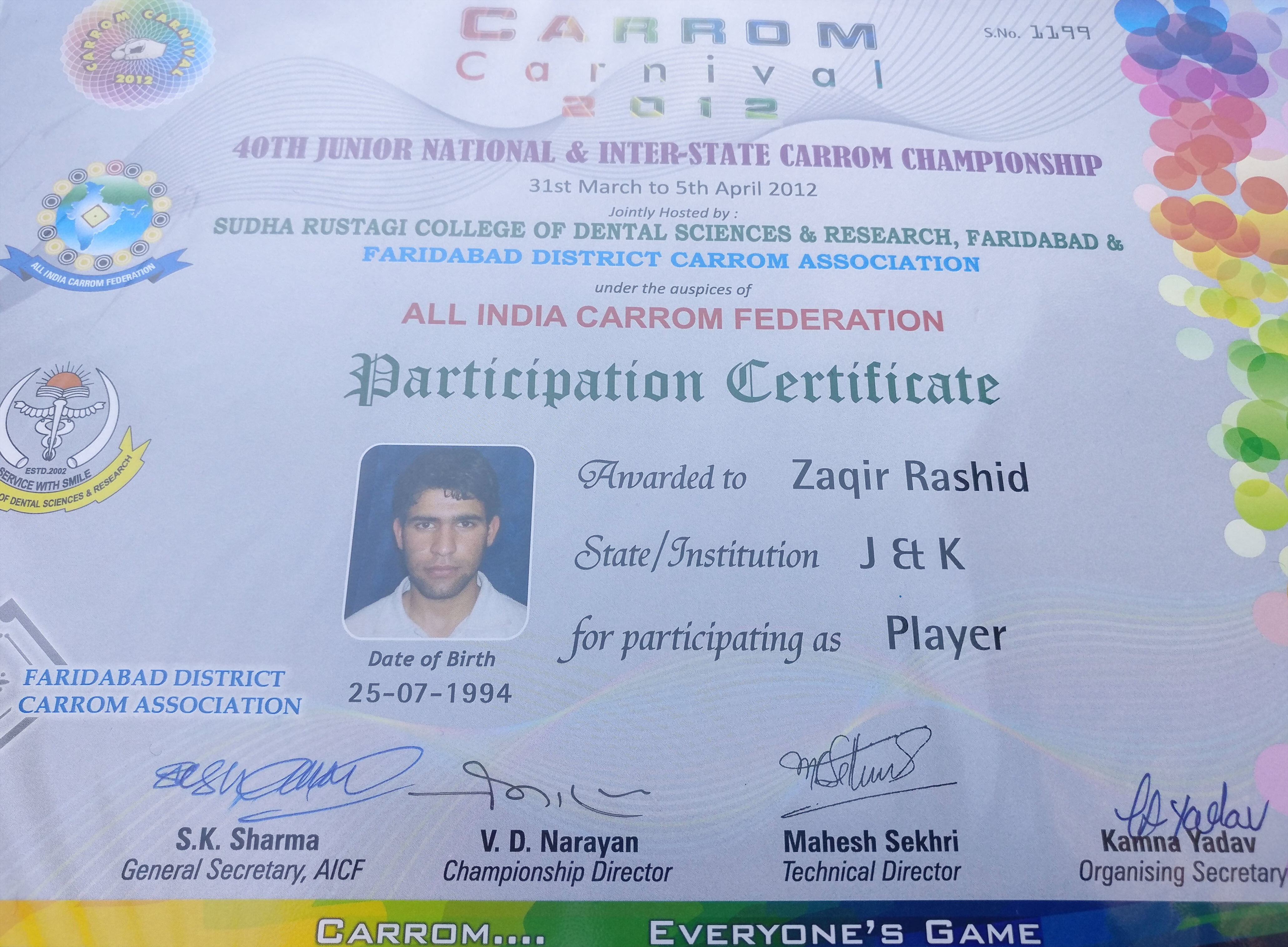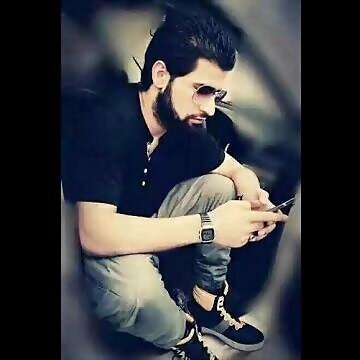
views
Noorpora (Pulwama): On April 30, 2010, the Indian Army killed three young people in Machhil in north Kashmir’s Kupwara. The deceased, the Army claimed, were Pakistani infiltrators. But they turned out to be local boys who, the local police found, were killed for cash rewards. Protests, starting from Srinagar, began spreading across the Valley.
Many boys throughout the Valley found a release in throwing stones and injuring security forces. And many of them were eventually booked by the police. The protests and stone-throwing were also taken up in Noorpora, a tiny suburb in Awantipora in south Kashmir’s Pulwama, and among those booked was a 14-year-old boy named Zakir Rashid Bhat.
There was nothing remarkable about the boy, except that he was a carrom champion and had gone out of J&K twice to represent his state in the game. Or, according to his father, that Zakir was given his name by a Kashmiri Pandit neighbour.
He came from a well-to-do family and was average in academics. He had just cleared his Class 12 examination that year, and scored just about alright in Urdu (68/100) and secured his best marks in English — 76. He really liked his iPhones and iPods, loved riding his Yamaha R15 fast and dressed in the latest fashion.
There was absolutely nothing to suggest that just three years later Bhat would pick up arms against India and go on to change perhaps the very nature of Kashmir’s militancy.

Musa graffiti right outside his house in Noorpura
“He was just 14 years old and the police had charged him with stone-pelting. He hadn’t done it, I kept telling them. But they continued harassing him. When I remember those days, and I have been trying to find the reason why he joined militancy for the last four years, I have come to believe that it was sometime during those moments of harassment that he decided to pick up the gun,” his father Abdul Rashid Bhat says.
Abdul Rashid added that he still remembers the moment when a police officer slapped Zakir. “I never raised my hand on my son and at that moment I saw a policeman slap Zakir across the face. He had not pelted stones, but the policeman didn’t listen to us. I can’t ever forget that moment. Neither could he perhaps. You see, we old people can live with a lot, have lived with a lot. But the young aren’t like us.”
Zakir Rashid Bhat, also known as Zakir Musa, has since travelled a long way to become today’s most wanted and influential militant in the Valley.
With one statement against the separatists — of threatening to behead them — he’s almost snatched away the appeal of three-decade-old Hurriyat from large sections in Kashmir. Almost nobody protested when the National Investigation Agency (NIA) raided Hurriyat in Srinagar.
With one slogan — Shariat ya Shahadat (Islamic law or Matyrdom) — he has redefined the 27-year-old insurgency against India. Several young people across the Valley agree with him that ‘Kashmir problem’ is a religious and not, as Hurriyat leadership and terror groups like Hizbul Mujahideen and Lashkar-e-Taiba claim, a political issue.
Not to forget, he’s also launched the Kashmir chapter — Ansar Ghazwat-ul Hind — of Al Qaeda and riled up some very powerful and influential figures in Kashmir and Pakistan.
When asked for their opinion on Musa, senior officers in the Army, CRPF and local police, who are fighting militancy in the Valley, described the 23-year-old militant as variously as a ‘potentially grave threat’, ‘nuisance’, ‘a product of global Islamist revival’ and a ‘spicy item number’. The last comment was made by a senior police officer who used Bollywood as a metaphor to describe the unrest in Kashmir.
“Some police officer had once told Zakir that he had no future left now that he had his name in FIRs. I tried to cheer him up, take him out of this atmosphere and sent him to Jammu for coaching. The police called him again for questioning, from Jammu, and harassed him again. Finally, he secured admission in an engineering college in Chandigarh. I thought he had moved on in life,” Zakir’s father said.
He returned from Chandigarh on vacation after finishing his first year B.Tech course at Ram Devi Jindal College, Chandigarh.
On July 17, 2013, eight days before he turned 19, Zakir Rashid Bhat left his home, with two other friends, to join militancy and become Zakir Musa.

“First I thought these were all rumours, but nearly three months later when I saw the videos of him with gun, I knew it was for real,” says a friend of Zakir Musa who has known him since childhood. He agreed to speak but not on record.
“He was active from the beginning. Was a master in operating electronic gadgets. He had a different view of things. When we all would agree to one thing he would come up with the most distinct opinion. I also remember him having beaten up our class headmaster for passing a lewd comment at a girl. Don’t think he was a goonda. He was the sort who would do something first and think later. To be honest, I really wasn’t shocked by his decision to pick up the gun. I think today only educated and well-to-do people are picking up the guns,” his friend says.
Zakir went on to join Hizbul Mujahideen under Burhan Wani, who himself had come into the ranks three years earlier in 2010. The two posed together in several photos.
There is a popular anecdote about Musa from these times.
The local police were being humiliated almost on a daily basis by Burhan, Zakir and other Hizb militants through their photos and videos taunting the establishment. Everyone except the police seemed to know where they were.
And just when the police, with egg on their face, were furiously looking for Burhan and his gang, Zakir Musa with another militant took a ride on a motorcycle down to Srinagar. From right under their noses, the two rode to the city, dressed up, clicked photos barely a few meters away from the offices of Inspector General and Superintendent of Police, and returned safely back to their hideout.
Police officers are said to have come to know about the daredevilry of Musa only after he uploaded photos of himself and his friend on the internet.
On July 8, 2016 Burhan Wani was shot dead by security forces in Kokernag. Nobody had anticipated the unprecedented reaction. In the ensuing violence between protestors and security forces, more than 100 people died and several hundreds were blinded by pellet guns. In a way, the unrest triggered by his death hasn’t died till today.
In death, Wani became the most popular militant of and the face of militancy in Kashmir in the last 25 years.
Hizb needed someone reliable to fill Wani’s shoes. Without losing much time, it announced Zakir Musa as Burhan Wani’s successor.
Within three years of joining militancy, Zakir Musa had become a commander, and the face, of the biggest terror outfit in Kashmir.
Although in time, both would turn out to be contrastingly different from each other. While Wani talked about fighting a secular resistance, Musa talked of killing the secularists; Wani wanted independence for Kashmir and Musa dropped the idea of territorial fight to start a war for a caliphate starting from the Valley to the rest of India.
And while the chubby-looking, clean-shaven Burhan united separatists and militants across Kashmir, Zakir Musa with his flowing beard and Bin Laden-like looks went on to wrench a split in the “resistance camp” right down the middle.
After being appointed as Burhan Wani’s replacement, Musa is believed to have lay low and used his time to read and watch videos of several Islamic preachers, one of who was Anwar al-Awlaki.
Awlaki, who was killed in a US drone strike in September 2011, himself became known for spreading Al Qaeda’s reach by uploading videos, text, booklets and CDs inciting violence, and is the person whose face and quotes have featured in several videos made by Musa.
Zakir’s first audio/video to feature Awlaki was issued on May 12, 2016. The clip started doing the rounds on local WhatsApp and Telegram channels in the evening and within minutes spread across Kashmir like wildfire.
“If they (separatists) want to run their politics, they should not become a thorn in our way to establishing Shariah (Islamic law). Otherwise we will chop off their heads and will hang them at Lal Chowk…. We just want to ask these political hypocrites that if Kashmir is a political issue why are you raising slogans like Azadi Ka Matlab Kya. La Illaha Ilallah, Pakistan Say Rishta Kya. La Illaha Ilallah. Why do you come and address people in mosques?”
A commander of Hizbul Mujahideen had just threatened to chop off the heads of Hurriyat leaders and hang them at Srinagar’s Lal Chowk. It had never happened before. The separatists went into a huddle. Nobody knew what was happening.

Baffled itself, Hizb issued a statement the next day distancing itself from Musa’s statements and clarifying that it was his ‘personal opinion’.
This was followed by another audio clip by Musa on May 14. “I stand by my statement. Hizb has disassociated itself from my statement, so I am disassociating myself from Hizb…. I never meant to chop off heads of every Hurriyat leader, but only of those who work for and support secularism. I again want to clarify that I am not against any particular leader like Geelani sahib.” And with this he quit Hizb.
“To understand Musa you have to understand that the sentiment among the youth in the Valley. The youth, which form a huge percentage of Kashmir’s population, today is against one thing — status quo. Over time, a feeling has percolated down that everyone from Lashkar to Hizb to Hurriyat is compromised in one way or another. Musa didn’t just break away from Hizb he broke away from status quo, and in this he attracted a huge following from the young,” says a senior CRPF officer posted in Kashmir.
Zakir Musa had not yet joined a new faction, though he continued releasing photos, audio and video clips, in some of which he showered praise on Al Qaeda.
These photographs also showed another transformation going on in Musa. He was gradually getting rid of his hip-looking, trimmed-beard sporting youth image. His beard had begun to grow to noticeable length and the bright clothes were gone.
After he launched the Al Qaeda franchise in Kashmir on July 27 this year, even the gun disappeared from the photographs. He instead started posing with a cane, sporting a long beard, wearing pheran (traditional long woolen coat), and looking into a distance — just like Osama Bin Laden.
By now Musa had begun to exert tremendous change on ground and attract visible following. Musa’s supporters, arguing that Pakistani flags in which bodies of dead militants were wrapped at funerals were un-Islamic since they did carry a Kalma, began wrapping militants’ bodies in black, Islamic (Tawheed) flags. Crowds attending these funerals began chanting Musa’s name. Graffiti bearing his name and now his signature slogan — Shariyat ya Shahaadat — began appearing on walls across the Valley.
Slogans in praise of Musa were reportedly chanted at Srinagar’s Jamia Masjid where Deputy Superintendent of Police Ayyub Pandith was lynched on June 22, they were chanted at the funeral of three Hizb operatives who were recently killed in Budgam, and also in the case of funeral of Abu Dujana, former LeT chief of Kashmir who later went on to join Musa’s Al Qaeda faction.

Zakir Musa a few years ago
In all these cases the militants were wrapped in Tawheed flags instead of Pakistani flags. And these are just some representative cases. His reach is way more than this.
Musa’s popularity has even jolted the chiefs of the two biggest anti-India terror groups based out of Pakistan — Hibzul Mujahideen and Lashkar-e-Taiba.
In recent weeks Salahuddin, the chief of Hizb and United Jehad Council — a conglomerate of over a dozen Pakistan-based anti-India terror groups, has released several video clips with remarkable frequency, trying to reclaim ground lost to Musa.
In a statement released on July 27 he said, “Kuch hamare dost dushman ke haath mein khel kar, qayadat ki yaksui mein khalal daal kar nuksaan phonchane ki koshish kar rahe hain. In harkaat se unko fayda nahi milega, ‘shariat aur shahadat’ logon mein confusion paida karega… daesh ya al qaida ki jammu Kashmir mein na koi gunjaish na koi zarurat hai,/em> (Some of our friends playing into the hands of our enemy, have been creating a confusion among in the leadership. These acts won’t benefit them. ‘Shariyat ya Shahadat’ will only create confusion…. Daesh or Al Qaeda don’t have a space or requirement in Jammu and Kashmir).”
Lashkar-e-Taiba, equally rattled after their chief in Kashmir — Abu Dujana — went on to join Zakir, also issued a statement in July calling Al Qaeda an Indian conspiracy and advising people against joining it.
“Wo ladai karega to samaan kahan se laayega? Al Qaeda ka uske liye samaan helicopter se bhejegi? Usse puucho agar Pakistan use nahi pasand to apni gun waapas kyun nahi deta? ISIS and Al Qaeda ki koi bisaat nahi hai idhar (From where will Musa get the guns to fight? Will Al Qaeda air-drop weapons from a helicopter? ISIS and Al Qaeda have no space in Kashmir),” said Najaf (name changed), from a village in central Kashmir, whose 14 family members have either died, or are right now, fighting for Hizb.
But Musa’s grand entry through Al Qaeda has excited many in the Valley.
“Zakir ka hona ek bohot badi baat hai. Usne ek nayi jaan phoonk di hai tehreek mein. Aaj uski baat se aaj kaun ittefaaq nahi rakhta ki maslaa-e-Kashmir ek siyasi maslaa nahi hai. Ye ek deeni masla hai (Zakir’s presence is a big factor. He’s breathed a new life in the struggle. Who doesn’t agree with his views that the issue of Kashmir is not a political issue but a religious issue),” said Shakeel Bakshi, one of the founding members of the pro-Azadi Islamic Students League.
Some in the police consider him nothing more than an inconvenience. “He’s just another criminal for us. We’ll kill him and anyone else who holds a gun in Kashmir very, very soon,” said IG Kashmir, Muneer Khan, before adding with a smile “unless he has a valid reason for holding that gun.”
However, others in the security establishment have a different view about him.
“It doesn’t matter how many guns or active militants Musa has with him. What matters is that Al Qaeda is an active international terror group with a vast global network. They’re known to carry out spectacular attacks, suicide bombing. They’re clearly serious about Kashmir. If they create an active channel in Kashmir, they could become, and have the capability to be, deadlier than Pakistani groups,” says a senior CRPF officer.

Musa graffiti right outside his house in Noorpura
Another senior police officer, who has overseen many recent successful operations in the Valley says, “Musa’s rise in Kashmir and Ayyub Pandith’s lynching aren’t entirely incidental. He’s a product of global Islamist revivalist movement and local factors like perceived threat to Muslim community. He’s not an immediate threat. But I would call him a potentially grave threat. And I will admit that his rise is worrying for us.”
The threat is not just in the idea that Musa has sown in Kashmir. There is a bigger security threat in his death.
Zakir Musa’s death, and forces are all out to get him, may be a bigger event and a trigger for something much bigger and much worse. By pitching himself against the most powerful forces in India and Pakistan, he’s limited his options rather drastically and made serious enemies. His death is likely to trigger a chain of violence based on deep mistrust and suspicion.
“Agar Indian army ne use maara, haalat kharaab honge. Agar in tanzeemo ne Zakir bhai ko is buniyad pe maarne ki koshish ki, ki wo hamare saath nahi, to yahan militant kamazkam din mein to nahi chal payenge. Unka jeena yahan mushkil hoga. Hame pata hai ki Indian agencies bhi yehi chahegi (If army kills him, situation will worsen. If one of these militant outfits kill him just because he’s not with them, then militants won’t be able to step out at least in daylight. Their existence will become difficult. And we know that Indian agencies would want all this to happen),” a friend of Zakir in Noorpora says.
On August 11 this year, Musa was reportedly trapped in a Cordon and Search Operation (CASO) placed on Noorpora. But after 18 hours of search, the CASO yielded nothing. Musa had escaped, thanks to his network.
“Puri koshish ki humne jaise hi pata chala. Humne puri sham pathhar mare, aur raat mein to dikhai nahi diya to waapas chale gaye…pata chala Zakir bhai bina goli chalaye nikal gaye the, unke chahne waale Pulwama se lekar Srinagar tak qaafi hain. (We tried our best to save him. We pelted stones till the night, by when we couldn’t see anything. Then we came to know that he’s fled without firing a single shot. He has a lot of well-wishers from Pulwama to Srinagar),” his friend adds.
Musa’s father has been anticipating that moment for a long time now. A militant lives, on an average, for not more than 2-2.5 years after picking up gun. Musa has already lived for more than four.
“Jab se Zaakir gaya hai chaar saali ho gaye hain. Ek raat bhi hum nahi soye. Har raat lagta hai forces waale aayenge. Kiske saamne royein hum? Ab bas, ye khun kharaaba band ho chahiye (Since the day Zakir has left, it’s been four years. We haven’t slept even for a night anticipating forces to barge in any moment. In front of whom can we weep? It’s enough, this bloodshed should stop now).”
The life of Zakir Musa, the militant who’s challenged forces of two nuclear-armed states and lives to talk about it, is instructive and full of ironies. It is also a product of an unrest, of the sort which Kashmir is going through right now. Security forces have to fight not just the armed militant, but the idea, that is Zakir Musa. And prevent the Valley’s young from sinking even farther than him.
— With inputs from Aakash Hassan
(Part 1 of 12-part #KashmirBeyondCliches series)


















Comments
0 comment